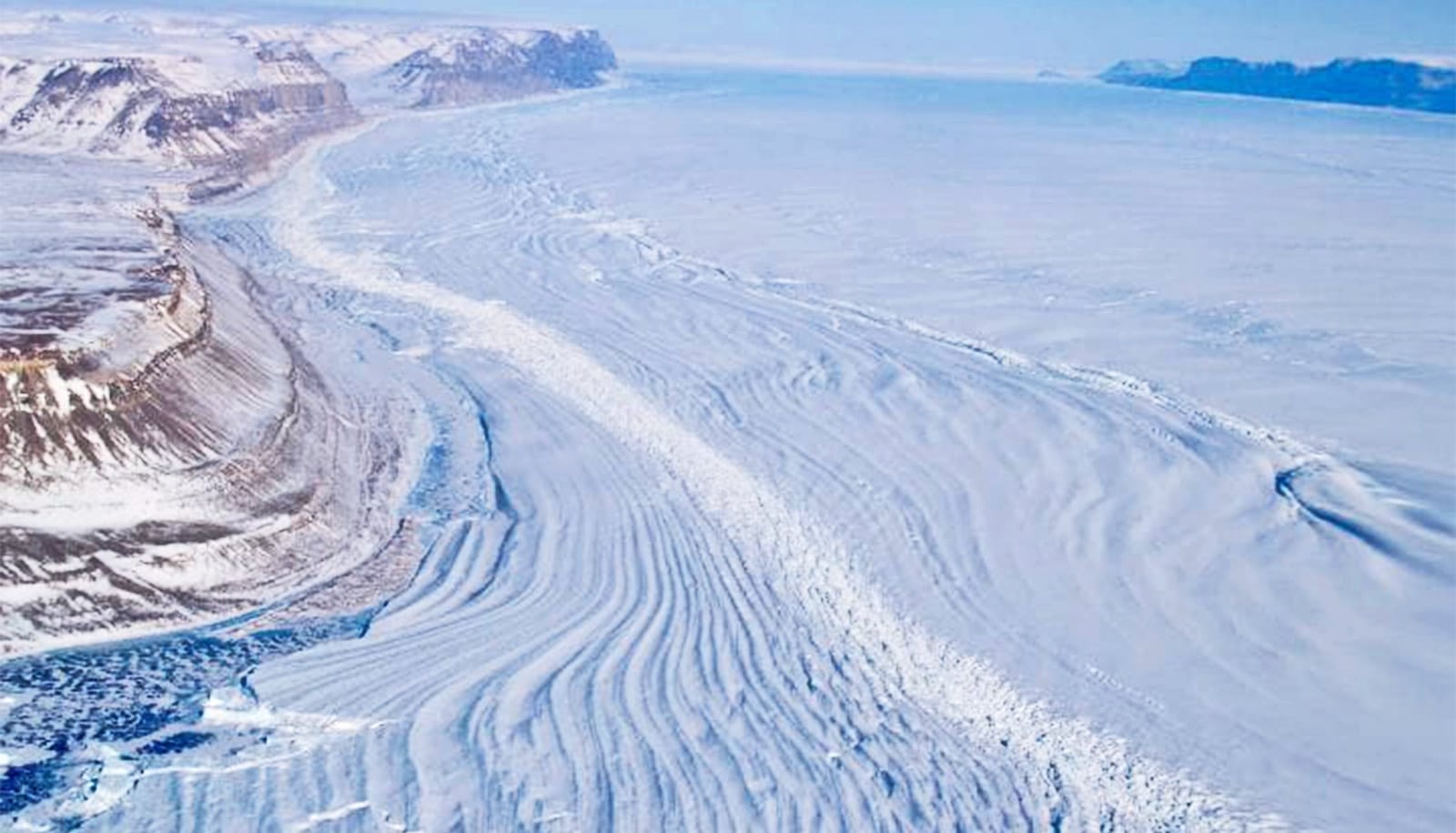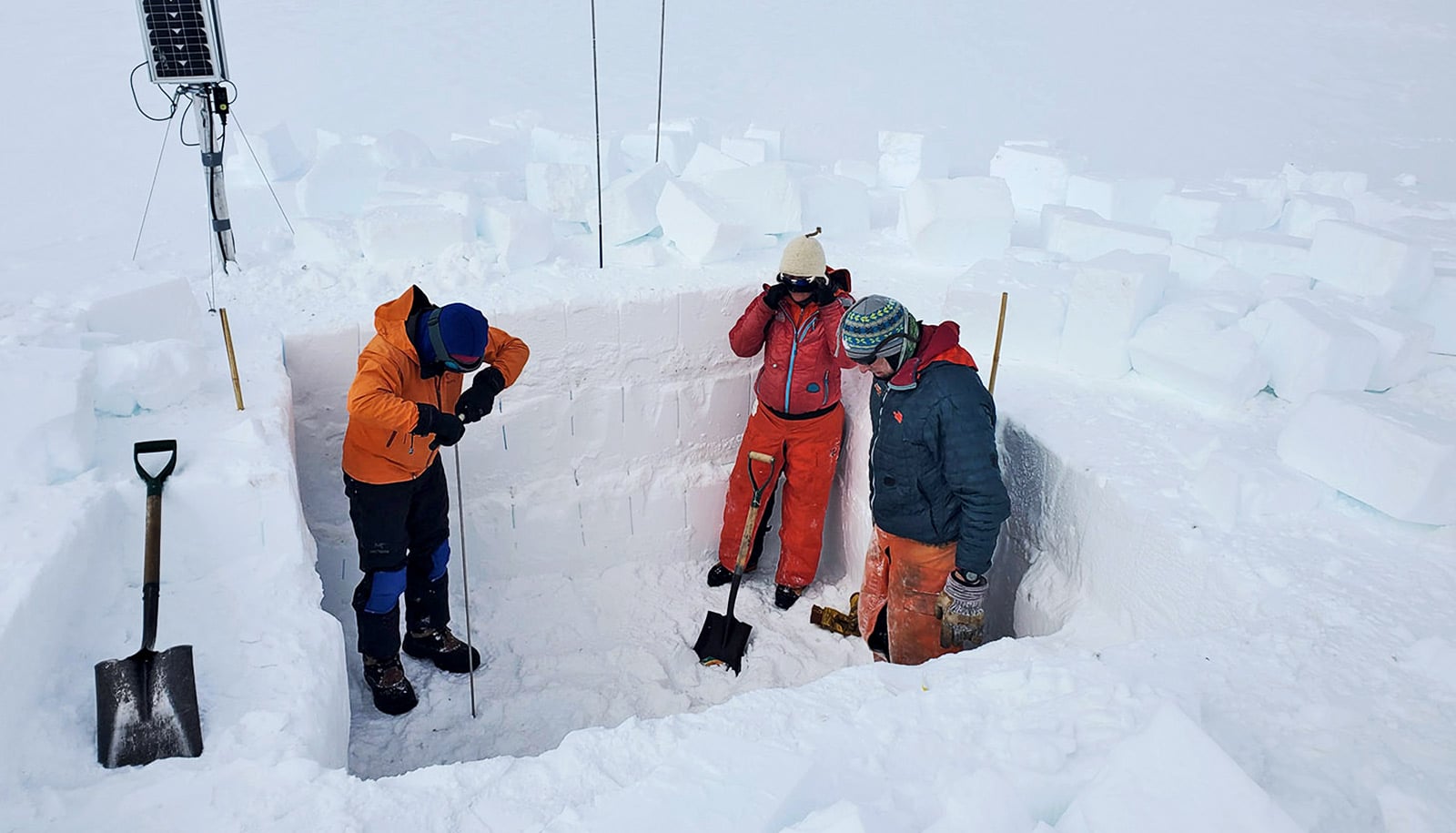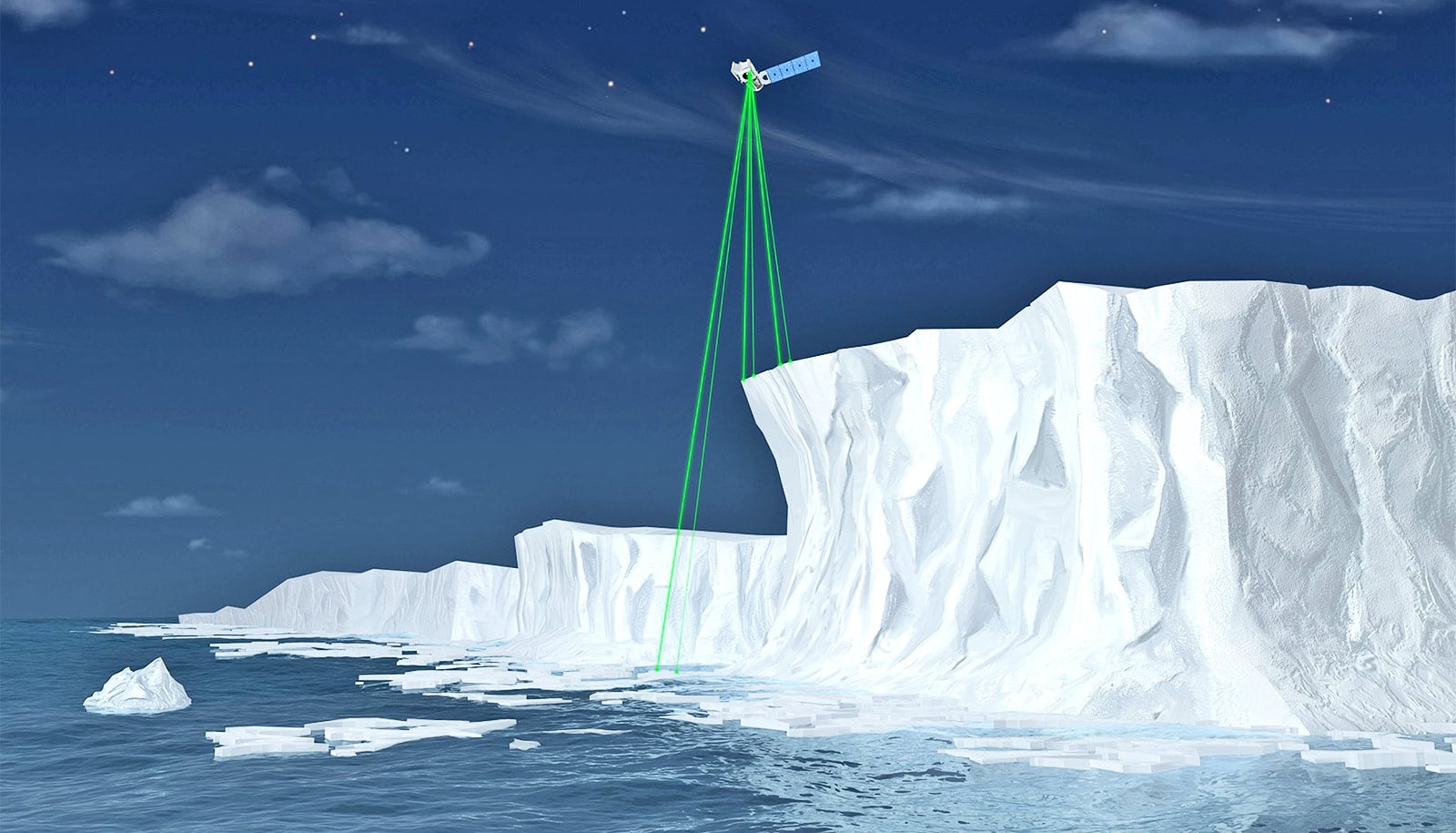The intrusion of warm ocean water beneath the ice at Greenland’s Petermann Glacier explains the accelerated melting it has experienced since the turn of the century, according to new research.
The research is the first large-scale observation and modeling study of the area. The researchers’ computer predictions indicate that potential sea level rise will be much worse than previously estimated.
As reported in Geophysical Research Letters, the researchers used radar interferometry data from several European satellite missions to map the tidal motion of Petermann Glacier and the Massachusetts Institute of Technology’s general calculation model to estimate the impact of climate change in a complex environment involving ice, seawater, and land, all of which are under the influence of tides and climate change-driven temperature boosts.
“Satellite data revealed that the glacier shifts by several kilometers—or thousands of feet—as tides change,” says lead author Ratnakar Gadi, a PhD candidate in Earth system science at the University of California, Irvine.
“Glaciers melt much faster in the ocean than assumed previously.”
“By factoring this migration into the MIT numerical ocean model, we were able to estimate roughly 140 meters [460 feet] of thinning of the ice between 2000 and 2020. On average, the melt rate has increased from about 3 meters per year in the 1990s to 10 meters per year in the 2020s.”
This and other studies conducted in recent years have caused a fundamental shift in polar ice researchers’ thinking about ocean and glacier interactions, says senior coauthor Eric Rignot, a professor of Earth system science.
“For a long time, we thought of the transition boundary between ice and ocean to be sharp, but it’s not, and in fact it diffuses over a very wide zone, the ‘grounding zone,’ which is several kilometers wide,” says Rignot, who is also a senior research scientist at NASA JPL. “Seawater rises and falls with changes in oceanic tides in that zone and melts grounded ice from below vigorously.”
The model predicted that melt rates will be highest near the mouth of the grounding zone cavity and greater than anywhere else in the ice shelf cavity, Gadi says. Warmer water and greater seawater intrusion beneath the ice explains the observed thinning along Petermann’s central flowline.
According to the study, the elongated shape of the grounding zone cavity is a major contributor to accelerated ice melting. In a run of the numerical model taking into account just warmer ocean temperature, the team found thinning of about 40 meters. In a second modeling exercise, an increase in the grounding zone cavity from 2 to 6 kilometers was included, and in that case, ice thinning grew to 140 meters.
“These modeling results conclude that changes in grounding zone lengths increase melt more significantly than warmer ocean temperatures alone,” Gadi says.
The researchers note that grounding zone ice melt reduces the resistance glaciers experience when flowing toward the sea, speeding their retreat. The researchers say this is a key factor used in projecting the severity of future sea level rise.
“The results published in this paper have major implications for ice sheet modeling and projections of sea level rise,” Rignot says. “Earlier numerical studies indicated that including melt in the grounding zone would double the projections of glacier mass loss. The modeling work in this study confirms these fears. Glaciers melt much faster in the ocean than assumed previously.”
NASA’s Cryospheric Sciences Program supported the work.
Source: UC Irvine



